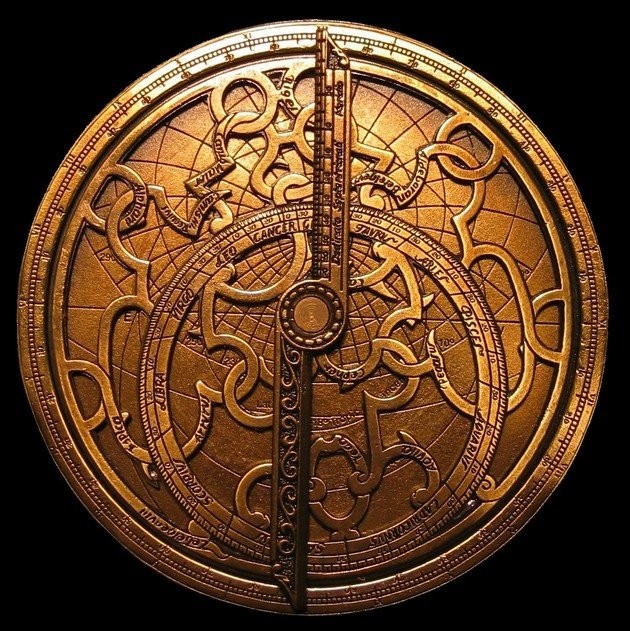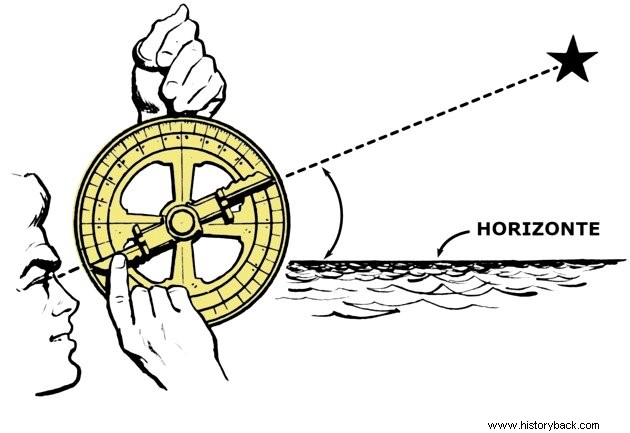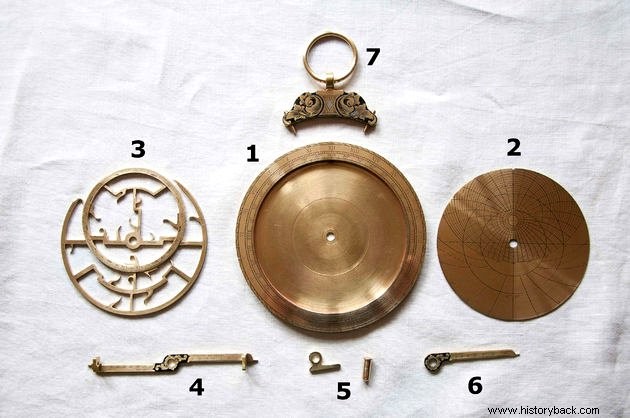The astrolabe is a measuring instrument that was invented by the Arabs and perfected by the Greeks.
Initially it was used on land, but was adopted by sailors in order to calculate the distances of sea routes.
It is estimated that there may be around two hundred functions for this instrument. Among them, knowing the time, specifying the seasons of the year, calculating the height of mountains or the depth of a well, etc., stand out.

Origin of the Astrolabe
The astrolabe has an uncertain origin, but it developed from the mathematical studies of researchers such as Euclid, Theo of Alexandria, Claudius Ptolemy, Hypatia of Alexandria and many others.
If the creation of the astrolabe is imprecise, its improvement and the use of the metal were given by Abraham Zacuto (1450-1522).
Probably born in Salamanca (Spain), Zacuto took refuge in the Portuguese court after the expulsion of the Jews from Spain, at the same time of the Great Navigations.
In Lisbon, he was advisor to the court of King Dom João II (1455-1495) and perfected the astronomical tables, as well as the astrolabe that was employed by Vasco da Gama and Pedro Álvares Cabral in their travels across the Atlantic.
How the Astrolabe Works
The astrolabe represents the celestial vault in motion. In this way, it is formed of several parts that depict the latitudes, the stars and the constellations.
The instrument consisted of the first attempt to transpose the surface of the sky, curved, to a plane. It can be built with simple materials like paper and brass.

Let's see how we could tell the time using an astrolabe, on the Summer Solstice.
The first thing to do is to find a star on the horizon, which will be the point of reference. Let's suppose we chose the star Spica (Esp), from the constellation Virgo. By measuring it, we will obtain the degree of the angle of the triangle, which for our example, was 30º.
After that, we go around the astrolabe to find, on the spider, the point corresponding to that star.
We rotated it until it coincides with the 30º latitude of one of the eardrums.
We turn the ruler so that it coincides with the Summer Solstice and we will get the time that marks at that moment.
See also:Area of the TriangleImportance of the Astrolabe for Navigation
The nautical astrolabe was essential for navigators, as it allowed them to calculate distances in a practical way with just one instrument and knowledge of geometry.
It was no longer necessary to carry the tables with astronomical calculations that would give information about latitude and longitude. All that was needed was the astrolabe and the maps that could be conveniently loaded by the user himself.
There was a sailor who had to measure latitude every day at solar noon in order to know where they were on the high seas.
Along with the sextant and the compass, the astrolabe was instrumental in making navigation safer.
See also:compassParts of an Astrolabe
Let's see what the parts of an astrolabe are:
In the center is engraved the maximum point of the sun, the zenith, whose maximum height is reached at the Summer Solstice.
As the elliptical rotates, the astrolabe marks 15 degrees for every hour elapsed. Thus, we will be able to know precisely the time of day and night.

- Mater - the disk that will contain all the plates that form the astrolabe.
- Eardrums - one for each latitude. Engraved on it are the altitude circles of the celestial sphere.
- Spider – a hollow disk where each of its points represents the position of the stars and the sun in the celestial vault. Its position varies from the Summer Solstice to the Winter Solstice.
- Ality - located at the rear. It contains two viewers that will be used to measure the height of celestial objects.
- Pins - which attach the needle to the Mater and allow it to rotate.
- Needle (or ruler) - which will tell us the result of the measures we take.
- Handle - allows the user to hang and carry it more easily.
Curiosities
- The oldest known astrolabe is an example designed by the astronomer Nastulus, in the year 927, in Baghdad.
- The instrument arrived in Europe via Muslim Spain, Al-Andalus, in the 12th century.
- There are a multitude of types of astrolabes such as flat, spherical, Islamic, maritime, universal, etc.
Read more :
- Rose of the Winds
- European Maritime Expansion
- Discovery of America
- Arab Culture
- Modern Age
